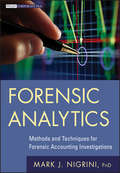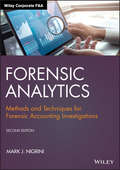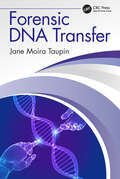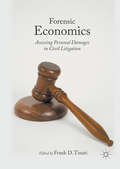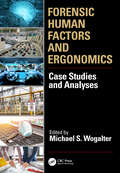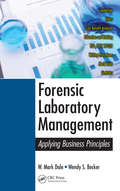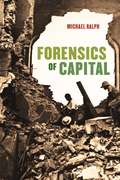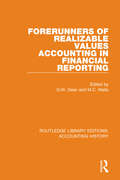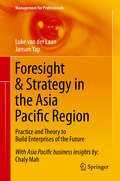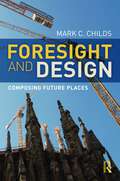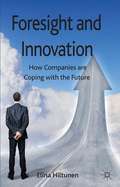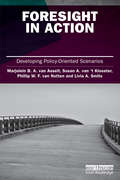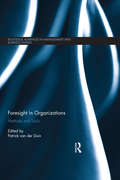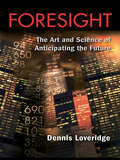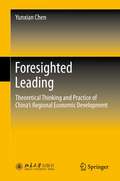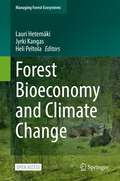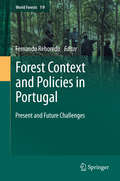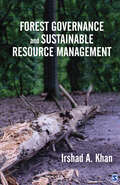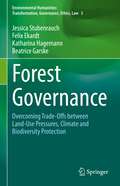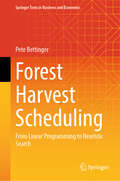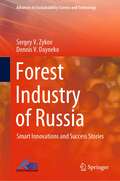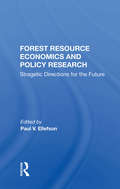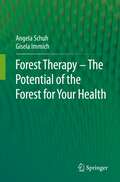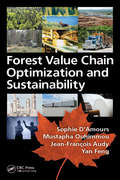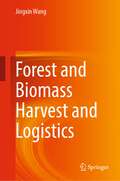- Table View
- List View
Forensic Analytics: Methods and Techniques for Forensic Accounting Investigations (Wiley Corporate F&A #558)
by Mark J. NigriniWith over 300 images, Forensic Analytics reviews and shows how twenty substantive and rigorous tests can be used to detect fraud, errors, estimates, or biases in your data. For each test, the original data is shown with the steps needed to get to the final result. The tests range from high-level data overviews to assess the reasonableness of data, to highly focused tests that give small samples of highly suspicious transactions. These tests are relevant to your organization, whether small or large, for profit, nonprofit, or government-related.
Forensic Analytics: Methods and Techniques for Forensic Accounting Investigations (Wiley Corporate F&A #558)
by Mark J. NigriniBecome the forensic analytics expert in your organization using effective and efficient data analysis tests to find anomalies, biases, and potential fraud—the updated new edition Forensic Analytics reviews the methods and techniques that forensic accountants can use to detect intentional and unintentional errors, fraud, and biases. This updated second edition shows accountants and auditors how analyzing their corporate or public sector data can highlight transactions, balances, or subsets of transactions or balances in need of attention. These tests are made up of a set of initial high-level overview tests followed by a series of more focused tests. These focused tests use a variety of quantitative methods including Benford’s Law, outlier detection, the detection of duplicates, a comparison to benchmarks, time-series methods, risk-scoring, and sometimes simply statistical logic. The tests in the new edition include the newly developed vector variation score that quantifies the change in an array of data from one period to the next. The goals of the tests are to either produce a small sample of suspicious transactions, a small set of transaction groups, or a risk score related to individual transactions or a group of items. The new edition includes over two hundred figures. Each chapter, where applicable, includes one or more cases showing how the tests under discussion could have detected the fraud or anomalies. The new edition also includes two chapters each describing multi-million-dollar fraud schemes and the insights that can be learned from those examples. These interesting real-world examples help to make the text accessible and understandable for accounting professionals and accounting students without rigorous backgrounds in mathematics and statistics. Emphasizing practical applications, the new edition shows how to use either Excel or Access to run these analytics tests. The book also has some coverage on using Minitab, IDEA, R, and Tableau to run forensic-focused tests. The use of SAS and Power BI rounds out the software coverage. The software screenshots use the latest versions of the software available at the time of writing. This authoritative book: Describes the use of statistically-based techniques including Benford’s Law, descriptive statistics, and the vector variation score to detect errors and anomalies Shows how to run most of the tests in Access and Excel, and other data analysis software packages for a small sample of the tests Applies the tests under review in each chapter to the same purchasing card data from a government entity Includes interesting cases studies throughout that are linked to the tests being reviewed. Includes two comprehensive case studies where data analytics could have detected the frauds before they reached multi-million-dollar levels Includes a continually-updated companion website with the data sets used in the chapters, the queries used in the chapters, extra coverage of some topics or cases, end of chapter questions, and end of chapter cases. Written by a prominent educator and researcher in forensic accounting and auditing, the new edition of Forensic Analytics: Methods and Techniques for Forensic Accounting Investigations is an essential resource for forensic accountants, auditors, comptrollers, fraud investigators, and graduate students.
Forensic DNA Transfer
by Jane Moira TaupinForensic DNA Transfer provides a guide to the recognition and current understanding of DNA transfer in forensic criminal investigations. Increased improvements in technology mean that it is now routinely possible to obtain DNA profiles from non-visible deposits. How or when the DNA in question was deposited may be an issue in the context of the case, especially if the donor of the DNA is not in dispute. A DNA profile alone cannot reveal when or how that DNA was deposited at a crime scene, nor can it reveal the body matter from which it originated. Issues of transfer associated with activities may be debated – which the traditional discrimination purpose of DNA profiling cannot address. DNA may be everywhere and anywhere – in homes, at workplaces, during transport, and on personal items including clothing. DNA from a person may be on an object they have never contacted or in a room they have never entered. Concepts discussed in the book include non-self DNA on hands through day-to-day activities, the prevalence of background DNA in the environment and perhaps on the exhibit, the persistence of any DNA transferred, and that a DNA result will depend on these variables as well as recovery techniques. Since DNA may be transferred to an exhibit: (a) during the commission of a crime, (b) before the crime, and/or (c) after the crime through handling, examination, and testing, this book covers various transfer pathways and sources of DNA. Inadvertent issues of transfer of DNA resulting in wrongful convictions and the misleading of investigations are discussed, with an emphasis on contamination mitigation. Forensic DNA Transfer examines the additional complexity resulting from non-visible deposits of DNA that impact on sampling and testing regimes. The changing understanding of the composition of purported 'touch DNA' deposits from the skin, including extracellular DNA transported via body secretions is described. Further, the newer focus on interpreting DNA evidence – using activity level propositions and the rationale and associated issues – is also discussed.
Forensic Economics: Assessing Personal Damages in Civil Litigation
by Frank D. TinariThis edited collection addresses the major issues encountered in the calculation of economic damages to individuals in civil litigation. In federal and state courts in the United States, as well as in other nations, when one party sues another, the suing party is required not only to prove that the harm was, indeed, caused by the other party, but also to claim and demonstrate that a specified dollar value represents just compensation for the harm. Forensic economists are often called upon to evaluate, measure, and opine on the degree of economic loss that is alleged to have occurred. Aimed at both practitioners and theorists, the original articles and essays in the edited collection are written by nationally recognized and widely published forensic experts. Its strength is in showcasing theories, methods, and measurements as they differ in a variety of cases, and in its review of the forensic economics literature developed over the past thirty years. Readers will find informative discussions of topics such as establishing earnings capacity for both adults and infants, worklife probability, personal consumption deductions, taxation as treated in federal and state courts, valuing fringe benefits, discounting theory and practice, the effects of the Affordable Care Act, the valuation of personal services, wrongful discharge, hedonics, effective communication by the expert witness, and ethical issues. The volume also covers surveys of the views of practicing forensic economists, the connection between law and forensic economics, alternatives to litigation in the form of VCF-like schedules, and key differences among nations in measuring economic damages.
Forensic Human Factors and Ergonomics: Case Studies and Analyses (Human Factors and Ergonomics)
by Michael S. WogalterThis book has 18 case study chapters investigating various injury scenarios through the use of a Human Factors and Ergonomics (HFE) analysis. Each injury scenario derives from one or more similar lawsuits (but names, places and some of the details are fictionalized). The scenarios describe a ‘slice of life’ of people interacting with products, equipment, tasks, and environments before they are seriously hurt. The forensic analysis that follows each scenario gives a background of prior similar events and systematically examines potential causes leading to the injury event. There is emphasis on the person-machine interface, human error, hazard analysis, hazard control and a model of communication-human information processing (C-HIP). Chapters are authored by highly experienced expert witnesses in HFE. The methods used are general techniques that can be applied to other injury scenarios, but would be better if employed earlier in a product’s life cycle to prevent or limit injury. The first three chapters introduce concepts useful for the analyses in the case study chapters. The last chapter offers some broad take-away points that cut across several of the case studies. Features contributions by persons who have extensive experience in HFE and who have served professionally in the role of an expert witness in various legal cases mostly in product liability Gives a broad range of situations to illustrate where HFE considerations could improve product or environmental safety. There is an emphasis on children/caregivers, and adult activities such as driving Uses mitigation strategies to reduce the likelihood of occurrence and severity of adverse events Includes a first-person scenario at the beginning of each chapter Allows the lessons learned to be adaptable to other domains where people interact with products and environments
Forensic Laboratory Management: Applying Business Principles
by W. Mark Dale Wendy S. BeckerNew technologies, including DNA and digital databases that can compare known and questioned exemplars, have transformed forensic science and greatly impacted the investigative process. They have also made the work more complicated. Obtaining proper resources to provide quality and timely forensic services is frequently a challenge for forensic managers, who are often promoted from casework duties and must now learn a whole new set of leadership skills.The interdisciplinary and scientific nature of laboratories requires strong leadership ability to manage complex issues, often in adversarial settings. Forensic Laboratory Management: Applying Business Principles provides laboratory managers with business tools that apply the best science to the best evidence in a manner that increases the efficiency and effectiveness of their management decision making. The authors present a performance model with seven recommendations to implement, illustrating how forensic managers can serve as leaders and strategically improve the operation and management in scientific laboratories.Topics include: Key business metrics and cost–benefit analyses Ethical lapses: why they occur, possible motives, and how problems can be prevented Forensic training, education, and institutes ISO/IEC 17025 accreditation implementation The book includes case studies simulating a working laboratory in which readers can apply business tools with actual data reinforcing discussion concepts. Each chapter also includes a brief review of current literature of the best management theories and practice.The downloadable resources supply two mock trial transcripts and associated case files along with PowerPoint® slides from Dr. George Carmody’s workshop on Forensic DNA Statistics and Dr. Doug Lucas’s presentation on ethics.
Forensics of Capital
by Michael RalphAs one of Africa’s few democracies, Senegal has long been thought of as a leader of moral, political, and economic development on the continent. We tend to assume that any such nation has achieved favorable international standing due to its own merits. In Forensics of Capital, Michael Ralph upends this kind of conventional thinking, showing how Senegal’s diplomatic standing was strategically forged in the colonial and postcolonial eras at key periods of its history and is today entirely contingent on the consensus of wealthy and influential nations and international lending agencies. Ralph examines Senegal’s crucial and pragmatic decisions related to its development and how they garnered international favor, decisions such as its opposition to Soviet involvement in African liberation--despite itself being a socialist state--or its support for the US-led war on terror--despite its population being predominately Muslim. He shows how such actions have given Senegal an inflated political and economic position and status as a highly credit-worthy nation even as its domestic economy has faltered. Exploring these and many other aspects of Senegal’s political economy and its interface with the international community, Ralph demonstrates that the international reputation of any nation--not just Senegal--is based on deep structural biases.
Forerunners of Realizable Values Accounting in Financial Reporting (Routledge Library Editions: Accounting History #25)
by G.W. Dean and M.C. WellsThis book, first published in 1982, collects papers about market price valuations capable of different interpretations. Many give quite explicit support for the selling price case. Others are incapable of reasonable interpretation other than in support for selling price valuations. And still others are not inconsistent with the selling price case. Together they provide valuable historical analysis of selling price valuations in diverse contexts.
Foresight & Strategy in the Asia Pacific Region
by Luke Laan Janson YapThis book explores the importance of strategy and how to make it work in an environment characterised by constant change. With a specific focus on the Asia Pacific region, anticipated to become the epicentre of global economic activity, it offers insights into the optimisation of economic potential and social cohesion enabled by leaders, which is crucial to the global economy and living standards. It highlights sound foresight, strategic thinking and innovation as the critical underpinnings of successful business and provides a comprehensive guide to combining practice and theory to ensure successful strategies, from formulation to execution. The book also builds on the concepts of change, the purpose of business, foresight, strategic thinking, strategic planning and innovation to present a holistic view of how these essential elements can be integrated in practice. Combined with a special contribution by Chaly Mah, the CEO of Deloitte Asia Pacific, the book carefully balances professional and academic insights to optimally benefit its readers and will be of interest to industry practitioners, researchers and students alike.
Foresight and Design: Composing Future Places
by Mark C. ChildsEvery plan, pro-forma, design, building contract, and construction schedule is a proposal about future places. To help improve such proposals, Foresight and Design: Composing Future Places presents conceptual tools to inform design and outline the need for designers to rigorously think about potential futures. Our built compositions are constantly transforming due to continuing urbanization, demographic shifts, climate change, the evolution of virtual worlds, economic and health disparities, and other unforeseen trends. If we envision and plan for alternative futures, we are better able to purposefully respond. This book presents emerging practices of foresight, including signals of change, thick descriptions, pace layers, (re)framing, prototyping, scenarios, maps of change, storytelling, and world-building, to indicate how robust contemplation of multiple potential futures can help us compose places that are durable, resilient, and adaptable. Five brief case studies interspersed between the chapters serve as examples of practitioners exercising foresight through these practices. Contributions include a description of a regional design process in Afghanistan by Anthony Fettes of Sasaki Architects, and an exploration into the Indigenous Futurism model-making competition by Anjelica Gallegos. Written for architects, designers, planners, developers, city councilmembers, and engineers, this book encourages all composers of the built environment to envision alternative futures and purposefully respond.
Foresight and Innovation
by Elina HiltunenForesight and Innovation is a guide for readers that are interested about the future. The book introduces a concept of futurist thinking, which includes anticipating, innovating and communicating about the futures. These concepts show how various organizations, all over the world are thinking, communicating and creating a better future.
Foresight in Action: Developing Policy-Oriented Scenarios
by Marjolein Van AsseltAssessing the future is vital in informing public policy decisions. One of the most widespread approaches is the development of scenarios, which are alternative hypothetical futures. Research has indicated, however, that the reality of how professionals go about employing scenarios is often starkly at odds with the theory - a finding that has important ramifications for how the resulting images of the future should be interpreted. It also shows the need for rewriting and updating theory. This book, based on an intensive five year study of how experts actually go about assessing the future, provides a groundbreaking examination of foresighting in action. Obtained via ethnographic techniques, the results lay bare for the first time the real processes by which scenarios are made. It is also the first book to examine foresighting for public policy, which is so often overlooked in favour of business practice. From handling of discontinuity to historical determinism, the analysis reveals and explains why foresight is difficult and what the major pitfalls are. Each chapter ends with a toolkit of recommendations for practice. The book aims to help readers to reflect on their own practices of public-oriented foresight and thus to foster a deeper understanding of the key principles and challenges. Ultimately, this will lead to better informed decision making.
Foresight in Organizations: Methods and Tools (Routledge Advances in Management and Business Studies)
by Patrick van der DuinForesight for Organizations will acquaint the reader with various foresight methods and tools, to show the reader how these methods are used, what the pitfalls are and how the methods relate to each other. This innovative volume offers the reader the ability to carry out a study of the future by him- or herself and apply the results in a decision-making strategy process. The author addresses the following methods: scenarios, trend analysis, the Delphi method, quantitative trend extrapolation, technology assessment, backcasting and roadmapping; the most relevant and popular methods that also cover the range of approaches from predictive, via normative to explorative. Every chapter also contains references to additional literature about the methods being discussed. This book is essential reading for researchers, academics and students in the areas of Community Development, Sociology of organizations, Change management, Social entrepreneurship, Sustainable development and participative planning.
Foresight: The Art and Science of Anticipating the Future
by Denis LoveridgeSince the early 1990s interest in foresight has undergone one of its periodic resurgences and has led to a rapid growth in formal foresight studies backed by governments and transnational institutions, including many from the United Nations. However, texts that counterbalance in depth practical experience with an exposition and integration of the m
Foresighted Leading: Theoretical Thinking and Practice of China’s Regional Economic Development
by Yunxian ChenUnder the conditions of market economy, the government is an independent economic entity, whose function is not only to provide services and handle public affairs, but also to coordinate, advance and lead economic development. The dual functions of regional government include providing service and administration at the micro-level on behalf of market economy on one hand and leading, regulating and promoting economic development at the macro-level on behalf of the central government on the other hand. Foresighted leading means giving free rein to the government, especially regional government, in economic guidance, regulation and early warning. It also means that the government is responsible for effectively allocating funds and gaining advantages using market rules, leveraging market forces and other means such as investment, price, taxation, law, and organizational, institutional and technological innovations to promote the scientific and sustainable development of the regional economy.
Forest Bioeconomy and Climate Change (Managing Forest Ecosystems #42)
by Jyrki Kangas Lauri Hetemäki Heli PeltolaThis edited open access volume explores the role of forest bioeconomy in addressing climate change. The authors put a particular focus on planetary boundaries and how the linear, growth-oriented economy, is coupled with climate change and environmental degradation. Biobased products and sustainable production paths have been developed, but how can they be scaled in order to lead to an economic paradigm shift? This and other questions are discussed throughout the volume.Since science indicates that climate change will continue this century, the authors also analyse how forests can be adapted to increasing forest disturbances that changing climate are expected to cause. The authors propose climate-smart forestry as useful approach for climate mitigation and adaptation of forests to climate change, as wells as sustainable increase of economic well-being based on forestry. The book illustrates the application of climate-smart forestry in the Czech Republic, Finland, Germany and Spain, i.e., in EU countries with quite different forests and forest sectors. This proactive and inspiring volume is an essential resource for Forest Management professionals, decision makers, scientists, and forestry students.
Forest Context and Policies in Portugal
by Fernando ReboredoThis book provides an up-to-date analysis of the Portuguese forests and forestry sector, including its history, its total economic value, current threats and opportunities and future challenges, namely the need to incorporate more planning and technology in forest management practices. The methodological approach of analysing the forestry sector in terms of its total economic value, and the use of this new perspective to correctly perceive the forest sector and to base development strategies is unique. Also, the use of new methods and technologies in the Portuguese forestry sector will be an opportunity to share these experiences with a wider international audience. For example, fire incidence during the summer has almost no parallel in the Western World, implying that Portuguese forest landscapes function as a "natural lab of wildfires" from which much can be learned globally. Thus, the outcomes of the fire management policies adopted might represent important lessons for Mediterranean basin countries.
Forest Governance and Sustainable Resource Management
by Irshad A. KhanForest Governance and Sustainable Resource Management vividly presents the current state of management and governance of forests and other natural resources in India. It focuses on the substantial underperformance and need to ensure effective implementation of the national forest policy to arrest further depletion of India’s rapidly declining forest cover. The book extensively covers the history of forestry in India, the various forest policies, the legal and management frameworks, the various international conventions and protocols for dealing with climate change and how effective forest management can enable their implementation. It recommends various strategic, implementational and governance reforms to deal effectively with the current situation. A highlight of this book is its extensive coverage of the Reducing Emissions from Deforestation and Forest Degradation in Developing Countries (REDD+), a climate change mitigation solution adopted by the United Nations, and India’s state of readiness in implementing it. The book suggests that foresters need to overcome their siege mentality and instead work towards empowering themselves to play a more proactive role in saving India’s forest resources.
Forest Governance: Overcoming Trade-Offs between Land-Use Pressures, Climate and Biodiversity Protection (Volume 3) (Environmental Humanities: Transformation, Governance, Ethics, Law)
by Katharina Hagemann Felix Ekardt Jessica Stubenrauch Beatrice GarskeThis book analyses and develops overarching concepts for forest policy and forest governance and includes a detailed investigation into the historical discussion on forests. It examines opportunities and limits for negative emissions in a sector that – like peatlands – appears significantly less ambivalent compared to highly technical large-scale forms of climate geoengineering. The analysis shows that the binding climate and biodiversity targets under international law are much more ambitious than most people assume. Measured against that, the volume critically reviews the potentials of afforestation and reforestation for climate mitigation, which is often presented as the new saviour to fulfil the commitments of the Paris Agreement and to reach climate neutrality in the future. It becomes clear that ultimately only biodiverse and thus resilient forests can function as a carbon sink in the long term. The volume shows that the existing European and international forest governance approaches fail to comply with these targets and insights. Furthermore, the book develops a bundle of policy measures. Quantity governance systems for livestock farming, fossil fuels and similar drivers of deforestations represent the most important approach. They are most effective when not directly targeting forests due to their heterogeneity but central damaging factors. With regard to the dominant regulatory and subsidy-based governance for forests we show that it remains necessary to supplement these quantity governance systems with certain easily graspable and thus controllable regulatory and subsidy regulations such as a regulatory protection of old-growth forests with almost no exceptions; extension of the livestock-to-land-ratio established in organic farming to all farming; far-reaching restriction of bioenergy use to certain residues flanked by import bans; and a national and international complete conversion of all agricultural and forest subsidies to “public money for public services” to promote nature conservation and afforestation in addition to the quantity control systems.
Forest Harvest Scheduling: From Linear Programming to Heuristic Search (Springer Texts in Business and Economics)
by Pete BettingerThis book provides a synthesis of methods that have been used in both practice and research to develop forest harvest schedules (plans of action) and to assess alternative policy scenarios. Beginning with exact mathematical methods (linear, mixed integer, and goal programming), the book provides a brief history of their conception, followed by an approachable description of the processes commonly employed to search a solution space for the optimal solution to a problem. Hill-climbing, random search, and binary search processes are then described as relatively simple alternatives to the exact methods. Heuristic search processes (threshold accepting, simulated annealing, tabu search, and genetic algorithms) are then described as semi-rational, biased alternatives to solving forest harvest scheduling problems. The closing remarks of the book provide context for the use of forest harvest scheduling in addressing today's contemporary forest management issues. In addition to a set of common-sense principles that are introduced throughout the book, provided in the book is a fifty-question exam associated with the content introduced.
Forest Industry of Russia: Smart Innovations and Success Stories (Advances in Sustainability Science and Technology)
by Sergey V. Zykov Dennis V. DaynekoThis book focuses on crisis management in forest industry of Russia. It is about the present, and the future, with a short retrospective about the past of the forest industry in Russia. It includes forecasting too and description of some of the best practices of developed countries to be implemented in Russia to overcome the crisis. The main theme of the book is smart innovations and innovative activities introduced and also those which are required in the forest industry of Russia. The book considers the effectiveness of innovations and institutional changes in the forest industry, which are an important direction of innovation activities required all together with technological and economic breakthrough with ecological aspects in priority. The necessity to implement the modern innovation system in the forest industry based on institutional changes is substantiated and thoroughly explained with successful examples of ongoing and future up-to-date smart innovations. The development of the forest innovation system is suggested for sustainable forest industry management; the key components of which are technological, product, institutional, and ecological innovations, as well as, innovative entrepreneurship. Realization of the innovation system for technological and intellectual improvement requires good scientific and personnel provision, anticipation of markets and tendencies of development for some decades ahead. The implied advanced technologies in the forest industry also include IT-, nano-, and biotechnologies. The success stories of the leading Russian and international companies in the forest industry of Russia are studied attentively in the book. The book presents a profound methodical and theoretical substantiation for the further implementation of the smart innovations and of the successful experience of the industry leading companies.
Forest Resource Economics And Policy Research: Stragetic Directions For The Future
by Paul V. EllefsonThis book reviews the status of discipline-wide activity in forest economics and policy research, especially investment levels, past and current program emphasis, program planning, and organizational involvement. It defines strategic directions for forest economics and policy research.
Forest Therapy - The Potential of the Forest for Your Health
by Angela Schuh Gisela ImmichIn fast-paced everyday life, it is becoming increasingly important to find an antipole. The forest seems to be the perfect place for this - it offers balancing stimuli, health-promoting effects and its climate is proven to be effective on human health. This non-fiction book explains the background and facts about the effect of forest visits on a scientifically sound basis and sensitizes readers to the great health benefits of forest bathing (Shinrin-Yoku) and forest therapy. As an oasis of tranquility, the forest invites you to slow down, regenerate and draw new energy. Written for interested lay people - psychotherapists, doctors and other health professionals can read along. From the contents: How the forest and its climate affect us - How to discover and use the forest and its atmosphere for your health. The Authors: Prof. Dr. Dr. Angela Schuh and Gisela Immich, M.Sc., research the effects of forests and climate on health at the Ludwig-Maximilians-Universität, Munich, Germany, and develop concepts for preventive forest use as well as forest therapy. This book is a translation of the original German 1st edition Waldtherapie - das Potenzial des Waldes für Ihre Gesundheit by Angela Schuh and Gisela Immich, published by Springer-Verlag GmbH Germany, part of Springer Nature in 2019. The translation was done with the help of artificial intelligence (machine translation by the service DeepL.com). A subsequent human revision was done primarily in terms of content, so that the book will read stylistically differently from a conventional translation. Springer Nature works continuously to further the development of tools for the production of books and on the related technologies to support the authors.
Forest Value Chain Optimization and Sustainability
by Sophie D’Amours, Mustapha Ouhimmou, Jean-François Audy and Yan FengThis book provides a global perspective on the various issues that the industry has to face as well as to provide some key global strategies that can help coping with those global challenges, such as collaboration, strategic value chain planning, and interdependency analyses. It presents literature reviews, strategic research orientations, assessment of some current key issues, and state-of-the-art methodologies.
Forest and Biomass Harvest and Logistics
by Jingxin WangThis book explains forest and woody biomass harvest, harvesting machines, systems, logistics, supply chain management, best management practices, harvest scheduling and carbon sequestration. It also covers applications of harvesting principles in forest and biomass management practices. The book provides an in-depth understanding of functions and applications of current and future harvesting technologies, the unique characteristics of harvesting machine with respect to cost, productivity, and environmental impacts. Special features include harvest machine illustrations and images of field operations, tabular presentations of filed studies of forest operations and detailed modelling processes for forest and biomass harvest logistics and supply chain management. Specifically, the book is designed for students, researchers, educators, and practitioners in the field of forest and biomass harvest and logistics. The book’s contents have been tested in teaching as the Harvesting Forest Product class for undergraduates and graduates in the Division of Forestry and Natural Resources at West Virginia University since 2000. The information contained in this book is a robust reference resource for students who would be future forest and biomass managers, timber contractors, entrepreneurs, researchers, and educators in the fields of forest and biomass operations, engineering, and resource management.
